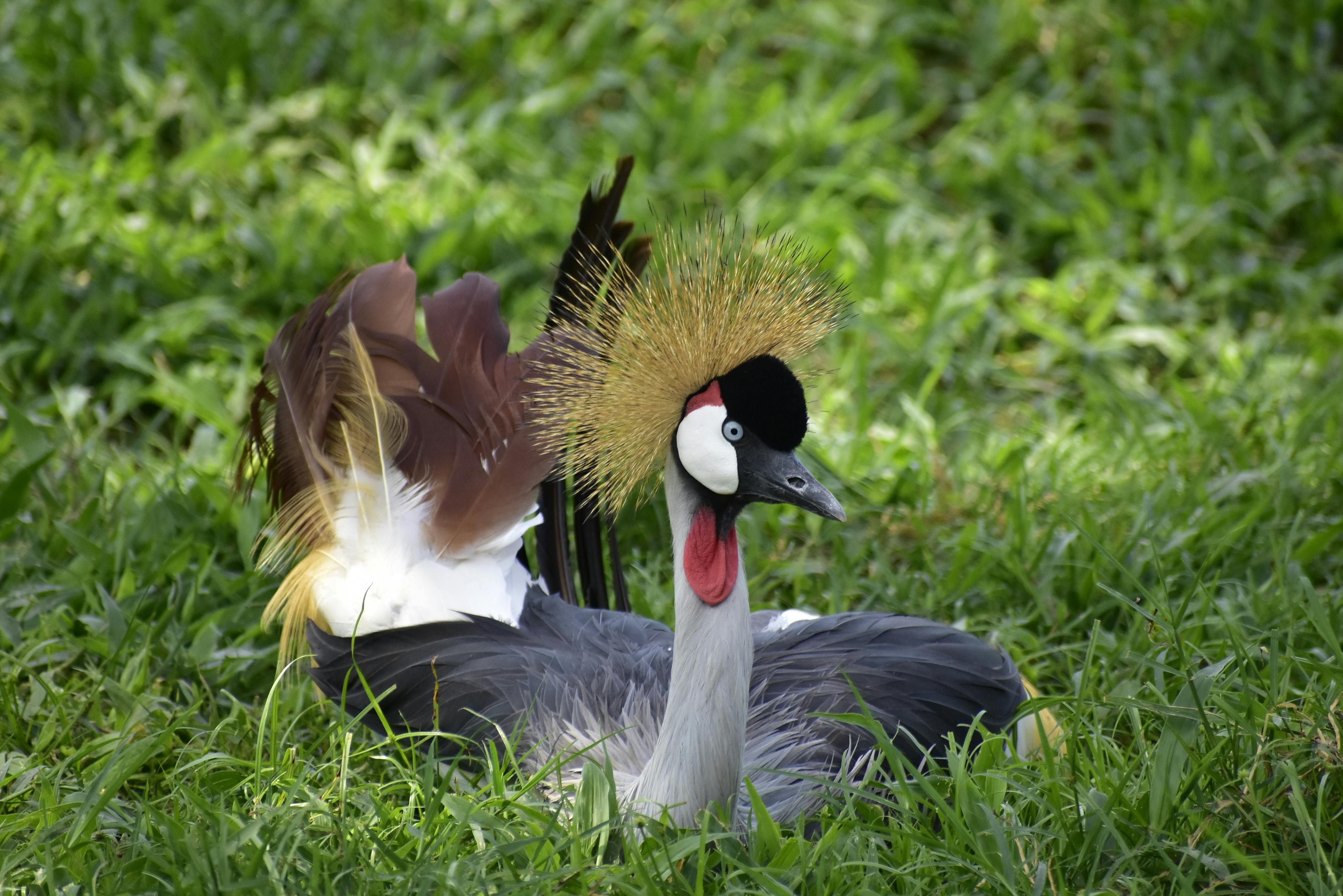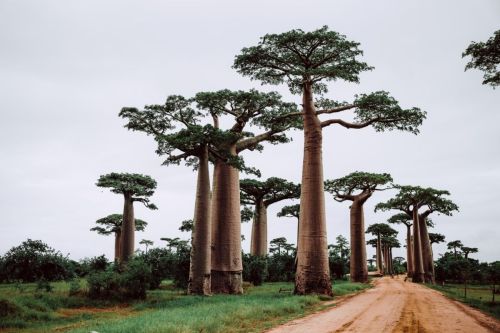Uganda is a landlocked African country located on Africa's largest lake and the Nile basin. It is a country of young people - over two-thirds of its inhabitants are under twenty-five. It has over 42 million citizens, of which 8.5 million live in Uganda's capital and largest city - Kampala. It is one of the poorest countries in the world.
The shores of Lake Victoria constitute the south-eastern border of the country.
The southern part of the country includes much of Lake Victoria, which Uganda shares with Kenya and Tanzania.
It is a cluster of lakes in East Africa that fill the tectonic depressions of the Great Rift Valley (a set of meridionally extended tectonic trenches - rifts).
Traditionally, the Great African Lakes include Lake Victoria, Lake Albert, Lake Edward, Tanganyika, and Kivu. Some consider only those located in the Nile basin (the first three) to be the Great African Lakes.
It is a landlocked country with no access to the sea, and its eastern borders lie approximately 1000 km from the Indian Ocean.
The vast majority of the country lies in the northwestern part of the Precambrian East African Plateau. Basically, the entire country is highland, with an average altitude of 1500 m above sea level. The upland area gradually decreases south towards the Lake Victoria basin.
In the western part of Uganda, the East African Plateau abruptly breaks off and turns into the tectonic Central African Rift.
The highest peak of these mountains and all of Uganda is Mount Stanley with a height of 5110 m above sea level. The lowest point is the White Nile - 614 m above sea level.
Ruwenzori, along with Kilimanjaro and Mount Kenya, is one of three areas in Africa where glaciers exist today.
The second largest mountain area in Uganda is the volcanic massif with its 4127-meter-high extinct volcano, Elgon.
In addition to Lake Victoria, one of the largest lakes in the world, these lakes include:
It is also the second freshwater lake in the world and the third, taking into account all the world's lakes, including salt lakes. In terms of volume, it ranks eighth in the world.
Lake Victoria is included in the so-called African Great Lakes, its waters are divided between Kenya, Uganda, and Tanzania. It is located in the Nile basin, flowing into it, among others. The Kagera River (400 km long), is considered the source of the Nile.
The White Nile and the Blue Nile (the longest and most water-rich tributary of the Nile) join near Khartoum.
The first European to see the lake in 1858 was John Speke. He named it Lake Victoria in honor of Queen Victoria.
Flowing out of the lake, along the way it creates two waterfalls: Karuma Falls and Murchison Falls (120 m high waterfall).
In the north of the country, there are much fewer rivers, and some of them are seasonal, especially in the north-eastern region.
Oxisols are characteristic of the tropical equatorial and subequatorial climate zones, and such a climate occurs in Uganda. They come in red, red-yellow and yellow varieties. The red color of the soil is characteristic of Uganda.
The north-east of the country is semi-arid.
It belongs to seven African countries located on the equator: Saint Islands. Thomas and Principe, Equatorial Guinea, Gabon, Congo, Democratic Republic of the Congo, Uganda, Kenya and Somalia.
Most of Uganda's territory lies north of the equator.
In the south, it is a moist, tall grassy savannah with lots of trees. The further north, especially in the northeast, the savanna becomes more and more dry, and poor, with short grasses and a low density of trees, mainly baobabs and acacias. Various species of palm trees also grow widely in Uganda.
Tropical forests grow in the southwest of the country and on Lake Victoria, with tree species that shed their leaves in the dry season.
The area of forests has decreased dramatically as a result of human activity and has been replaced by various types of agricultural land.
Human activity in the 20th century, especially the civil war, when animals were killed for food purposes, caused a drastic decline in the number of animals. Hippos and crocodiles suffered the least damage.
One of the last places where the mountain gorilla can be found is the Virunga Mountains - a volcanic mountain range in eastern Africa.
These are mainly: antelopes, giraffes, buffaloes, and big cats, including lions and cheetahs. Its world of birds is impressive, as there are 1061 species in Uganda. Fairly common are ostriches and flamingos, there are also shoebills.
One of the most important representatives of birds is the gray crowned crane - a species of large bird from the crane family - which is a symbol of the country, placed on the coat of arms of Uganda next to the gazelle.

There are seven national parks: Bwindi Impenetrable Forest, Queen Elizabeth National Park, Mount Elgon National Park, Murchison Falls National Park, Kidepo Valley National Park, Kibale National Park, and Rwenzori Mountains National Park (inscribed on the UNESCO World Heritage List in 1994).
Kampala developed around an old fort established by the British Imperial East Africa Company in 1890. It obtained city rights in 1949, and in 1962, when Uganda gained independence, it became the capital of the country.
The city is the main economic and cultural center of the country. There are many industrial plants (textiles, metal, wood, machinery, food), as well as the Uganda Scientific Society, founded in 1933, Makerere University, founded in 1922, a technical college, and numerous cultural institutions.
Southwest of Kampala is Entebbe International Airport.
The Kingdom of Buganda was established at the turn of the 14th and 15th centuries. In 1894, the British made it a protectorate, which lasted until 1962. It was then that Buganda became part of independent Uganda.
The inhabitants of Uganda and the kingdom of Buganda speak Swahili.
In the 1st century, these peoples were subjugated by the Nilotes who came from the north. In the 10th-15th centuries, the Kitwara state was established in these areas, the peak of its development was in the 14th-15th centuries.
After the collapse of Kitwara, many tribal states were established in what is now Uganda, the most important of which were the kingdoms of Ankole, Bunjoro, Toro, and Buganda. In the 19th century, Buganda assumed hegemony there.
The reigning Mutesa I adopted Islam and established contacts with other African states (Egypt and Zanzibar), as well as with the British. Missionaries began to arrive there in the mid-19th century, and in 1888 the British East Africa Company began its operations and took Buganda under its protectorate. In the early 20th century, the British protectorate expanded to cover the entire country.
During World War II, Ugandans fought in the ranks of the British army. After the end of the war, Africans sat in the legislative council for the first time, and the first African political organizations adhering to the leftist doctrine began to emerge.
In 1962, Uganda was proclaimed independent, and a year later it was declared a republic. Edward Mutesa was the first president of Uganda.
Industry and trade were also nationalized. As a result of the coup, General Idi Amin took power and introduced a brutal dictatorship in the country. The dictator expelled all Indians from the country, which led to the collapse of trade.
As a result of Amin's actions, approximately 300.000 Ugandans lost their lives.
Milton Obote took over the government - as a result of his actions, approximately 100.000 Ugandans died. The civil war continued, with bloody fighting and subsequent coups occurring in the country. In 1989, Yoweri Museveni took over the government and led to the relative political and economic stabilization of the country.
There was constant fighting in Uganda between government supporters and guerrillas supporting the leaders removed as a result of the coup.
It is a terrorist organization that has killed tens of thousands of people in Uganda since 1987. The founder and leader of the movement is Joseph Kony, a self-proclaimed prophet and voice of God and the Holy Spirit, whom "the Creator sent to save the Acholi people.
The ideology of the LRA is based on a mixture of Christianity, mysticism, indigenous religions, and witchcraft. The goal of their activity is to establish a theocratic state based on the Ten Commandments, along with the culture and traditions of the Acholi people.
Many mediation efforts have been made, including: by the Pope, but they were ignored by Kony. The organization "Invisible Children Inc." has launched a campaign to remove Joseph Kony from power and release child soldiers.
LRA forces may number up to 3000 soldiers, including about 1500 women and children. Most of the soldiers are children.
This bill would provide for the death penalty for "qualified homosexuality." The European Parliament condemned this law.
In 2020, 43.252.966 people lived there. Population density is not uniform, it is highest in the southern part of the country, especially near Lake Victoria and Lake Albert. 1/4 of the population lives in urban areas.
The official languages are English and Swahili. The popular language in the capital and surrounding areas is Luganda.
The vast majority of mountain gorillas are found in Bwindi National Park, with a few others in Mgahinga National Park, both in southwestern Uganda.
The attraction of Queen Elizabeth National Park is tree-climbing lions. Lions only climb trees when chased by other lions or wild buffalos. Meanwhile, lions in QENP deliberately climb trees and rest on them in the afternoon when the sun is high in the sky - a unique phenomenon.












